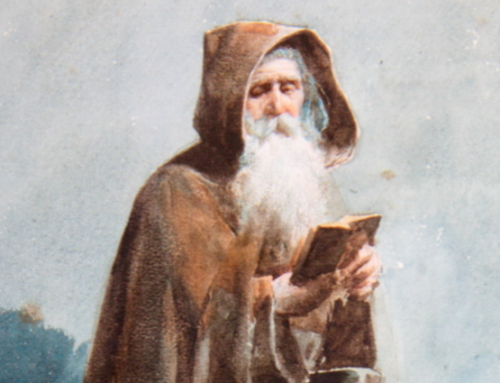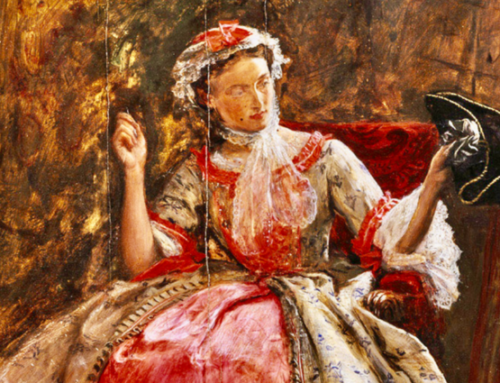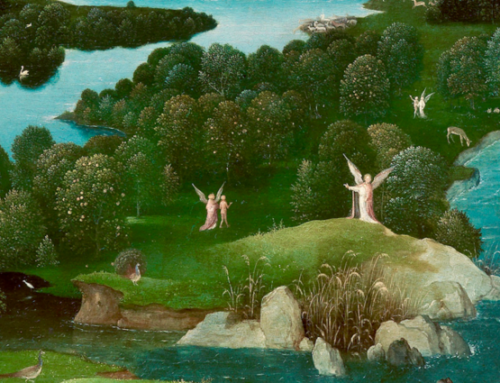Willmoore Kendall: Maverick of American Conservatives, edited by John A. Murley and John E. Alvis; foreword by William F. Buckley, Jr., 2002.
Willmoore Kendall (1909-1967) remains one of the most important figures in mid-twentieth century conservatism. His penetrating scholarship on Locke, his writings on the internal tensions inherent in majority rule, his early involvement with National Review, and his role in founding the graduate school at the University of Dallas are achievements that one might expect to have cemented his place in the cultural memory of the Right. Yet, as the first full essay in this collection reminds us, Willmoore Kendall has not been “abundantly remembered.” Despite his forceful presence at critical moments in the development of American conservatism, Kendall produced neither disciples nor a legacy in the manner of a William F. Buckley, Leo Strauss, Eric Voegelin, or Russell Kirk. The clear intent of this collection is to remedy this lacuna in our intellectual history, at least partially.
The world “collection” is here used deliberately. This work is not a book in the traditional sense, nor even a volume of assembled essays (the editors themselves note in the preface that “this is not a conventional book”). Instead, this collection is as eclectic as the man it honors, consisting of a foreward and a preface, seven essays exploring various aspects of Kendall’s life and work, the surviving correspondence between Kendall and Leo Strauss, and a reprinting of Kendall’s 1967 review of the 1964 Strauss festschrift, Ancients and Moderns. While the material is, at first glance, a hodgepodge, the net effect is—in the old adage—greater than the sum of its parts.
As might be expected from the inclusion of the last two items noted above, many essays deal in some way with the relationship between Kendall and Leo Strauss. In particular, the essays by John Alvis on “The Evolution of Willmoore Kendall’s Political Thought” and George Anastaplo on “Willmoore Kendall and Leo Strauss” treat the interaction between these two noted scholars at some length.
But the essays also serve to highlight the issues that set Kendall apart from his mid-century peers. Of particular value is the contribution by Kendall’s long-time co-author, George W. Carey, who lucidly expounds Kendall’s lifelong fascination with the issues involved in majority rule, beginning with his doctoral dissertation and continuing through his final unfinished essay on the “intensity problem.” Carey illuminates the continuities in Kendall’s thought, such as his dedication to the importance of small, coherent communities in a properly conservative democratic theory. He also highlights the changes, most notably Kendall’s gradually increasing respect for the structural limitations to unfettered majority rule as explicated in The Federalist. Carey, through this treatment, cautions conservatives against their current penchant for executive power, noting that it is the legislature that most closely represents those organic communities in which traditional conservatism finds its roots. Conversely, the “national mandate” given to the American President is a much more ungrounded, and therefore artificial, one, reminiscent of a moment in Rousseau’s “General Will.” Neither Kendall nor Carey question the President’s national mandate, but they imply that conservatives should embrace executive power only warily.
Any volume honoring Kendall would be incomplete if it did not highlight his many disagreements with fellow conservatives. In this vein, the essays by John A. Murley and Leo Paul S. de Alvarez treat Kendall’s thoughts on the Declaration of Independence and equality, particularly as interpreted by Harry Jaffa and his epigones. These two essays, taken in tandem, make a convincing case that Jaffa has at least partially misunderstood Kendall’s point. In the course of taking him to be a disciple of John Calhoun (Murley) and a proponent of a certain “American fascism” (de Alvarez) Jaffa accuses Kendall of insufficiently appreciating the centrality of the “self-evident truths” first recorded in the Declaration of Independence and forcefully rearticulated by Lincoln. But these authors argue that Kendall is not as diametrically opposed to these truths as Jaffa understands him to be. Rather than opposing equality simplicitur, Kendall instead expresses reservations about the non-majoritarian nature that certain political expressions of equality have taken. Nor, these authors note, is this concern necessarily invalid. Murley cautiously observes that while it may be true that Kendall did not fully appreciate the genius of Lincoln, he was certainly correct that men of Lincoln’s stature do not often appear on the national stage. This undeniable truth adds force to Kendall’s earlier noted caution—restated by Carey— with regard to excessive executive power.
In the end, however, the contents of the volume force us to deal directly with the relationship between Kendall and Strauss. Nor will many readers lack a certain curiosity about the interaction between these two serious students of politics. Those expecting a correspondence mirroring the profundity of that between Alexandre Kojève and Strauss will be sorely disappointed. Here, issues of philosophical depth are regrettably sparse. Strauss’s substantive thoughts are only two—a letter to Kendall about the editorial position of National Review with regard to Israel (later printed in National Review as a letter to the editor) and a one-paragraph response to Kendall’s thoughts on social contract theory as presented in the latter’s Conservative Affirmation. Kendall also makes only two substantive contributions: a reply to Strauss’s thoughts on National Review and Israel, and a few brief comments on Mill and Rousseau with reference his own defense of the “closed society.”
These moments of insight aside, the letters consist mostly of news (read: gossip). To those of the generations following these two men, the correspondence does provide an interesting, even tantalizing, snapshot of the state of the political science discipline in the decade between 1956 and 1966. We are provided with first-person insights into Kendall’s tumultuous relationship with the academy, Strauss’s efforts to place his students, and Kendall’s establishment of the graduate program at Dallas. Further, we learn, or are reminded, that tensions between political theorists and the American Political Science Association are nothing new.
But the lack of extensive written disputation between these two men does leave open the question of the exact nature of their intellectual relationship. In this regard, the contributors to this volume are less than univocal. On one end of the spectrum, George Anastaplo claims Kendall as “[p]erhaps the most (if not the only) eminent ‘convert’…to the Straussian persuasion.” There is certainly evidence to support this claim. But John Alvis, in his essay on the evolution of Kendall’s thought, instead proposes that Kendall did not become a “Straussian” per se, but instead used the novel insights of both Strauss and Voegelin to enhance, confirm, and enrich his own, not inconsiderable, political theory. Kendall’s return to Locke (the subject of his 1941 dissertation book) in his 1966 article “John Locke Revisited” provides a clear demonstration of what Kendall had learned from Strauss. But this did not make Kendall a Straussian. After all, Kendall turned to Eric Voegelin for the “symbolic” framework of his 1964 Vanderbilt Lectures, later published as part of Kendall and Carey, The Basic Symbols of the American Political Tradition. If one takes an author’s last word as his final word, it would be more accurate (though, I suspect, just as tendentious) to call Kendall a Voegelinian rather than a Straussian.
Alvis may come nearest to capturing the truth when he states that “Kendall is…the outstanding, and perhaps the only, example of a mature thinker established in his profession who undertook a thoroughgoing revision of his point of view as the result of his exposure to the efforts of Strauss and Voegelin to reform the discipline.” Alvis here raises a very interesting point. It does appear that there is a difference (ceteris paribus) between those who are exposed to Strauss (and, perhaps to a lesser extent, Voegelin) as relatively mature scholars, and those who receive a Straussian formation (fully acknowledging the many differing flavors thereof) before reaching intellectual maturity. In addition to Kendall, one thinks of writers such as George Parkin Grant and James V. Schall, both of whom produced a corpus both sizeable and substantive long before their encounters with Strauss and/ or his scholarship. Scholars in this situation are then positioned to absorb Strauss’s insights while still maintaining a certain critical distance. And it is noteworthy that, in the end, all three of the examples mentioned above—while holding Strauss in great esteem—did or do have intellectual concerns about the implications of Strauss’s treatment of Christianity, or, more precisely, the lack thereof.
Finally, while we are near this subject, it must be noted that references to Kendall’s 1952 conversion to Catholicism are rather muted in this work. The essays by Alvis and George H. Nash briefly note the fact of this conversion, and it appears (footnoted) in the foreword by William F. Buckley, Kendall’s godfather in the faith (though also, in a sense, his intellectual godson). But none of the contributors develop either the circumstances surrounding his conversion, or the intellectual influence—if any—that the change in confession had on Kendall. This absence is regrettable.
But it would not do justice to Kendall to conclude a review of this collection by dwelling on either Strauss or the Church, let alone their interaction. The editors have done their readers a service by bringing a bit of light to the person of Willmoore Kendall, both qua scholar and qua man. Still, I do not believe the editors will be offended by the offering that their collection does not honor Kendall sufficiently. We may hope that their work will inspire the concentrated attention—a booklength monograph—that their subject so richly deserves.
Books by Willmoore Kendall may be found in The Imaginative Conservative Bookstore. Reprinted with the gracious permission of Modern Age.








Leave A Comment